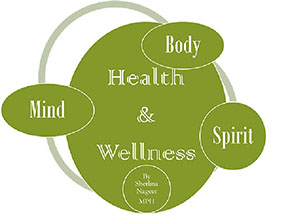As noted previously, cannabis as medicine has been used worldwide for centuries; there are records documenting its use dating back to as early as 2737 BC. Those who have worked to discredit and demonize cannabis in recent decades however, have actively suppressed much of this historical data, and have even produced studies of their own citing all sorts of negative effects. However, the fact is that much of the research done by the anti-cannabis club were manipulated in various ways to produce results that would further their propaganda efforts. Media reports about cannabis have also been highly influenced by political, religious, and business concerns, with the issue becoming highly polarizing and controversial. My pro-cannabis stance developed from a critical analysis of the science around this topic, some of which I will attempt to articulate here.
The major problem with cannabis research in the United States is the fact that the US Drug Enforcement Agency (DEA) classified marijuana—the dried leaves and flowers of the cannabis plant—as a Schedule 1 controlled substance, the most restricted category. This made it extremely difficult over the years, for scientists to get permission to conduct research with humans; most studies were done on animals only. This slowed the development of medical therapies as the necessary follow-up human studies remain lacking. (Of note is the fact that earlier this year, the influential American Academy of Pediatrics voted to recommend that the US DEA reclassify and remove marijuana from this restricted position in order to allow more research into its potential therapeutic uses.)

Many of the claims often made against cannabis fail to meet many of these necessary criteria for being scientifically valid. One common allegation is that cannabis is a ‘gateway’ drug, leading to the abuse of other controlled substances. Many of the studies associated with this claim were done on rats only and the findings are actually not unique to marijuana; similar behaviour was observed with alcohol and nicotine as well. Researchers also regularly failed to take into account other social and developmental factors that influence substance use such as peer pressure and the availability of other drugs.
Claims linking cannabis use to brain damage and lower IQ are also more fiction than fact. The IQ studies fail to take socioeconomic status into account and while some studies have indeed shown some differences in brain images between cannabis users and non-users, these studies were usually small in sample size. Also, while differences were noted, it could not be determined whether those differences existed before or were caused cannabis use, nor did they appear to be linked to any actual negative effects on participants’ behaviour or mental processes (in other words, there is a correlation, but no direct causation).
It is undeniable that the leaves, seeds, and other parts of the cannabis plant do possess substances (delta-9-tetrahydrocannabinol- THC, and other related compounds) that have the ability to alter perceptions, moods, memory, etc. However, so do many other common and legally available substances such as tobacco and alcohol. In fact, according to a recent study in the journal Scientific Reports, that assessed and compared the risks associated with various ‘recreational drugs’, cannabis was found to be the least risky while alcohol was found to be the deadliest.
A comprehensive report by the Institute of Medicine- “Marijuana and Medicine: Assessing the Science Base” (conducted in 1999 at the request of the White House, interestingly), found that few marijuana users develop dependence (although some do), and that marijuana dependence appears to be less severe than dependence on other drugs.
Of course, this same critical lens must be used when evaluating the pro-cannabis research as well. Although it has been challenging, scientifically valid studies of cannabis have been ongoing for years, in numerous countries. A meta-analysis is a statistical way of comparing and combining results from different studies in order to identify patterns, disagreements, or other interesting relationships among results. One such meta-analysis of numerous studies that investigated the long-term effect of cannabis use on brain functioning failed to find any substantial impact on persons’ memory, perception, judgement, and reasoning.
A 2009 review of clinical trials (research studies that explore whether a medical strategy, treatment, or device is safe and effective for humans) that were conducted over a 38-year period in the US found that nearly all of the 33 published studies showed significant and measurable benefits in subjects receiving cannabis treatment.
Overall, cannabis has been found to be effective in pain relief especially, as well as in stimulating the appetite, and reducing nausea and seizures. As such, cannabis offers relief from chemotherapy-induced nausea, AIDS-wasting, epilepsy, multiple sclerosis, arthritis, and other nerve and chronic pain conditions.
Sherlina can be contacted at ssnageer@yahoo.com





